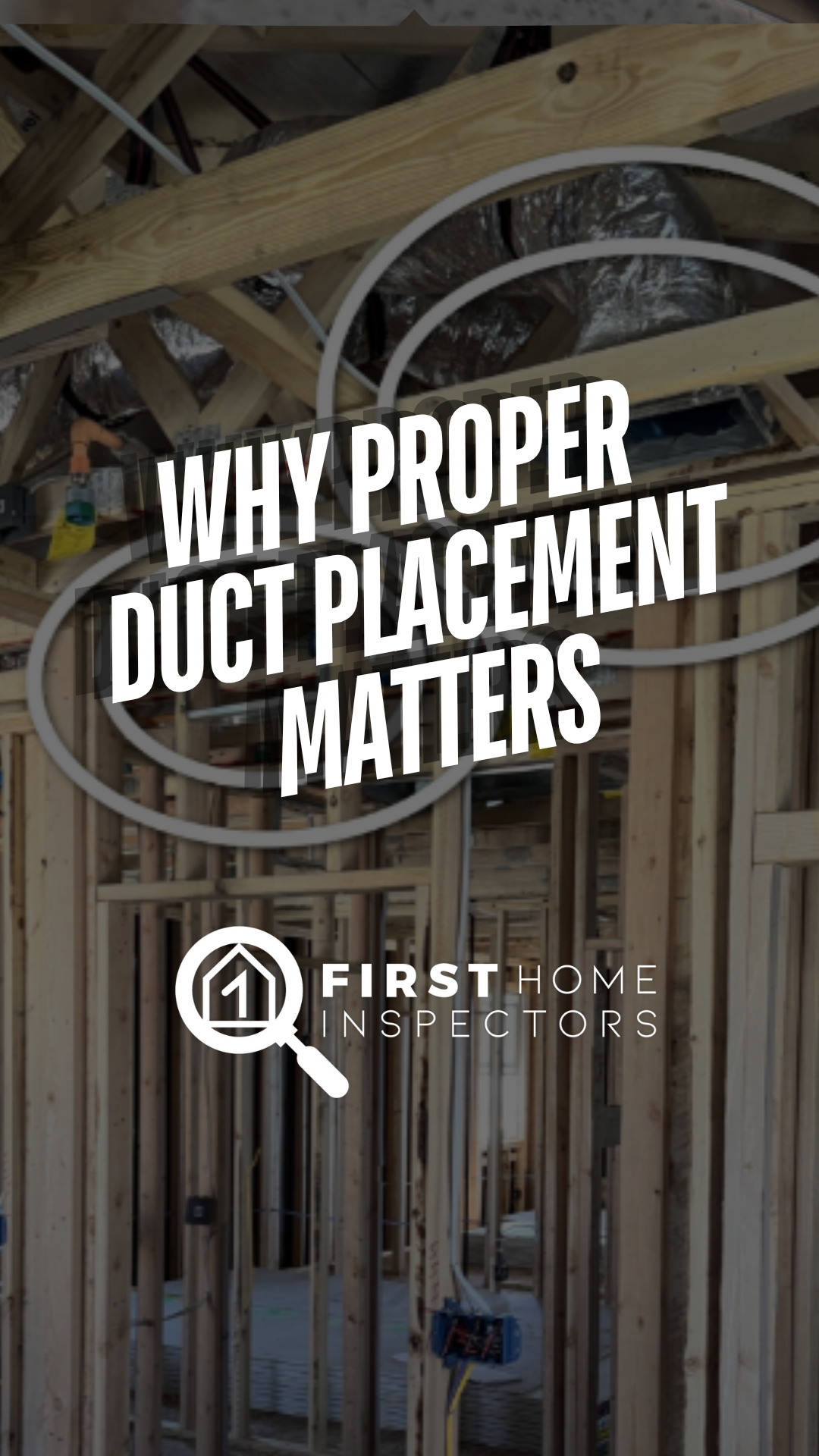Why Ductwork Placement Matters
During a recent pre-drywall inspection on a new home in Las Vegas, I found an issue that’s easy to miss but can seriously affect your comfort once you move in: poorly located ductwork. Specifically, the HVAC supply duct was installed too close to the return vent and the door, rather than being centered or positioned closer to the exterior wall.
This might not sound like a big deal at first, but it can have a real impact on how evenly your home heats and cools—and how comfortable each room feels.
The pre-drywall phase is the best (and easiest) time to address this kind of issue. Once the drywall is installed, relocating ductwork involves cutting into walls or ceilings, moving components, and doing repair work afterward. That means more cost, more time, and more hassle.
What’s the Problem With Poor Duct Placement?
In any home, the goal of your HVAC system is to move air efficiently throughout the space, keeping temperatures consistent and air quality high. But when supply vents (where the conditioned air blows in) are located too close to return vents (where air is pulled back into the system), the system can end up working against itself.
Here’s what can happen when ductwork isn’t placed properly:
Air doesn’t circulate well in the room, especially in corners or near windows where heat gain and loss are more noticeable.
The system becomes less efficient, since conditioned air may be pulled back into the return vent before it has a chance to mix into the room.
You might feel uneven temperatures, like cold spots in the winter or warm areas in the summer—even if the thermostat says everything’s fine.
In the case I mentioned, the ductwork was placed too close to the return and the door. Ideally, supply ducts should be installed closer to the center of the ceiling or along an exterior wall. This allows the air to flow across the room, improving comfort and helping your system run more efficiently.
Why This Should Be Fixed Before Drywall Goes Up
The pre-drywall phase is the best (and easiest) time to address this kind of issue. Once the drywall is installed, relocating ductwork involves cutting into walls or ceilings, moving components, and doing repair work afterward. That means more cost, more time, and more hassle.
During a pre-drywall inspection in Las Vegas, one of the main goals is to look at things like HVAC layout, plumbing runs, and electrical wiring before they’re hidden. If something doesn’t look right—or could affect how the home performs once it’s finished—it’s important to raise the issue while changes can still be made without tearing anything apart.
Inefficient ductwork in this brand new Las Vegas home
Can the Builder Fix It?
In many cases, yes. If a supply duct is simply too close to the return or the door, the builder may be able to move it closer to the room’s center or another exterior wall. Sometimes, it’s just a matter of adjusting a run of ductwork or moving a ceiling register.
That’s why we note these things clearly in the inspection report and encourage buyers to follow up with their builder. Even small changes like this can make a noticeable difference in how comfortable your home feels year-round.
Building a New Home in Las Vegas? Don’t Skip the Pre-Drywall Inspection
New homes aren’t immune to issues—especially when many trades are working on tight schedules. A pre-drywall inspection gives you the chance to make sure everything from the framing to the HVAC system is set up the right way before it’s covered up.
If you're buying or building a home in Las Vegas, a pre-drywall inspection can help you catch these small but important details. Comfort, efficiency, and peace of mind all start with getting things right—before the walls go up.


